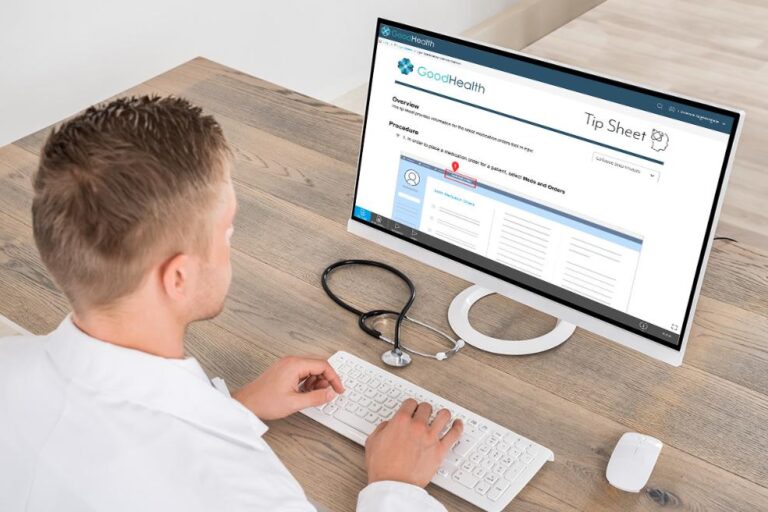Epic® shared new requirements for its Gold Stars program at its UGM event in August. The program initially focused on whether organizations were live with certain Epic applications and functionality. Now, the leading EHR will begin to focus on utilization, adoption and efficiency and how it impacts clinical and financial performance.
The new requirements leave many health systems wondering how they will adjust their implementation and Epic training strategies to maintain their Gold Star level. Resource-strapped health systems are particularly feeling the weight of the new requirements. They will need to boost adoption of – and efficiency with – existing functionalities that have been underutilized, while also ensuring the successful integration of new workflows.
We put together a guide for all you need to know about Epic Gold Stars and how uPerform can help you earn or maintain your Gold Star levels.
What is the Epic Gold Stars program?
Epic’s Gold Stars program is a 10-level initiative designed to promote continuous improvement in EHR usability and feature adoption. The goal is to help organizations enhance clinical and financial outcomes through EHR optimization.
Put more simply, Epic uses its Gold Star program to assess an organization’s implementation of Epic features. Now, Epic is looking beyond implementation and is assessing adoption and utilization of its key offerings.
Gold Star levels are determined by assessing over 800 categorized items across focus areas like patient access, patient experience, clinical quality and safety, population health management and productivity of both physicians and nurses.
Why should organizations care about Epic Gold Stars?
Unlike programs like Epic Honor Roll, there isn’t a financial incentive to achieving Epic Gold Star levels. However, that doesn’t mean the recognition doesn’t provide value. Health organizations want to be known for providing optimal care, and Epic Gold Stars is another notch on the belt for aspirational health systems.
Furthermore, health systems are competing with one another to attract the best talent. High marks in Epic’s Gold Stars program signals to prospective new hires that a health system prepares and supports its users through their daily use of technology. It might not seem like a big deal, but burnout and tech stress are highly correlated, and users want to be supported in their use of tech.
Lastly, organizations can use Epic Gold Stars as somewhat of a litmus test for their own EHR optimization journey. EHRs are one of the largest IT investments a health system will make, and the journey doesn’t end at implementation.
Driving adoption and optimizing use of the EHR is an uphill battle, but the benefits of EHR optimization are immense. More efficient users lead to improved financial outcomes and better patient care. Optimizing billing processes and complicated revenue cycles can save large sums of money for systems. The benefits are virtually endless, and Gold Stars can be a roadmap for EHR optimization and organizational success.
What are the new thresholds for earning Gold Stars?
As mentioned, Epic introduced new thresholds for utilization in 2024. These apply to almost every Gold Stars focus. Whereas prior requirements focused on configuration, the new requirements will focus on utilization of features and functionality.
For example, consider the scoring for “Physician Productivity.” Previously, scores may have been determined simply by how many features and functions are enabled and/or configured that fall under the focus of “physician productivity.” Now, the stars will determine how physicians are leveraging these tools. Are they following the proper steps? Minimizing click counts? How long are they spending on these tasks? These are the types of utilization metrics that may be used in determining Epic Gold Stars levels.
How uPerform can help you earn and maintain Epic Gold Stars level
Earning and maintaining Epic Gold Stars, particularly with the new utilization thresholds, requires a coordinated effort across organizational leadership, IT leadership, clinical leadership and more.
The new utilization thresholds will place more emphasis on an organization’s ability to successfully communicate and manage change, facilitate adoption of new or under-utilized workflows and drive user efficiency with Epic.
Communicating and managing change
Effectively communicating change is one of the biggest challenges to health IT projects. Clinicians are busy doing all they can to make it through their shift and treat patients. In fact, most actively avoid change as long as they can. Low email read rates, workarounds and low adoption of new workflows are all evidence of this. But there are strategies and tools that can help.
Effective change communication starts with building trust in IT leadership. One easy step to build trust is to avoid sending change communications to users who aren’t affected by the change. Doing so only makes users less likely to engage with your change communications down the road. If you want to better understand the importance of trust in IT leadership and how to improve it, KLAS Research provides publishes a Trust in IT Leadership report.
Communicating change must also be a multi-channel approach that meets individual users where they are. Some users may prefer email communications; others may prefer communications that meet them directly in their workflow at their time of need. uPerform enables organizations to deliver role-based change communications to users in their inbox or directly in their flow of work.
PODCAST: Driving user engagement with communications and training
When Community Health Network (CHN) wanted to consolidate their communications and training materials to create a single source of truth, they used uPerform to create the Knowledge+ library. Now, thanks to seamless access to support, the uPerform change communications tool and a host of other communication methods, nearly 90% of CHN’s user base is accessing the Knowledge+ library to better understand their clinical workflows.
Listen to Podcast
Where engagement meets adoption
Getting users to engage with important communications and training is only half the battle. In the wake of the new Epic Gold Stars requirements, adoption is a critical step for maintaining star levels. In our experience working with healthcare organizations, adoption rates improve when communications and learning opportunities are delivered directly in the workflow.
With uPerform’s new Copilot, support is always just a click away. The Copilot icon hovers on the Epic screen and includes a change communications message center, direct answer search and access to the learning library. Now, users can see a notification if they have a new change communication message, instantly access learning materials for relevant workflow changes and reference ongoing support until they feel comfortable completing the workflow on their own.
CASE STUDY: How M Health Fairview drove 87% adoption with new eConsent tool
After rolling out a new eConsent tool, M Health Fairview was struggling to drive adoption. Just 7% of users had adopted the new tool. Working with uPerform (prior to the release of Copilot), Fairview embedded a how-to video directly into the eConsent navigator. Shortly after putting the work directly in the flow of work, adoption of the new tool increased to 87%!
Read full case study
Striving for efficiency
Ultimately, meeting new Epic Gold Stars requirements is about driving efficiency with Epic. This is where uPerform shines. Delivering help directly in the workflow allows Epic users to immediately put new skills to the test, helping increase their knowledge retention. Furthermore, uPerform offers learning in a variety of formats, including simulations. Interactive learning can also help increase knowledge retention.
PRESENTATION: Aspirus nurses spend 50% less time in Epic
Since making the switch to uPerform and delivering self-paced onboarding with ongoing support in the workflow, new nurses at Aspirus Health spend nearly 50% less time in Epic per patient, per shift. Additionally, nurses are passing the required post-training proficiency assessments at a rate of 96%. Read our recap or watch their presentation from the 2024 Epic XGM conference.
Read recap & watch presentation
Looking to improve your organization’s Epic efficiency?
Leverage our expertise in crafting a plan for change management, driving user adoption and delivering ongoing training. User adoption is in our DNA – we’ve been in the business of driving user adoption with complex applications for over 20 years. Join dozens of other leading health systems who are realizing the benefits of just-in-time learning – from improved scalability, faster onboarding, higher user satisfaction, increased efficiency, and more.
Contact us today to learn how uPerform can work for your organization.









